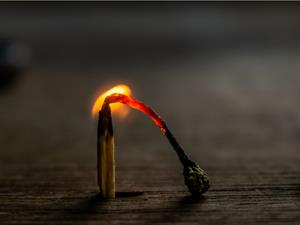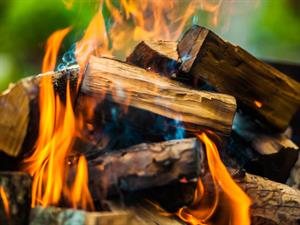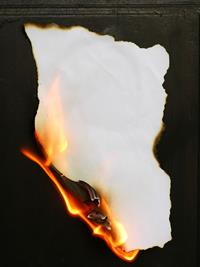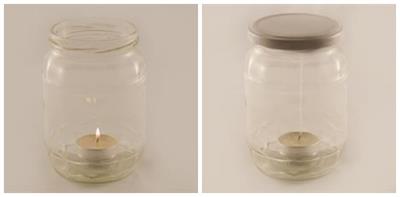
PUMPA - SMART LEARNING
எங்கள் ஆசிரியர்களுடன் 1-ஆன்-1 ஆலோசனை நேரத்தைப் பெறுங்கள். டாப்பர் ஆவதற்கு நாங்கள் பயிற்சி அளிப்போம்
Book Free DemoAny substance that changes its chemical properties is known as chemical change.
Example:
Burning of a candle wick, paper, matchstick, fireworks etc., are some of the common chemical changes that we see around us.
Burning: When the substances such as match stick, and paper are burned, they turn into ashes. The ashes have an entirely new chemical composition than that of the unburnt substances.

Burning of matchstick

Burning of wood

Paper turns into ashes
Any substance to burn requires three essential elements: Air, oxygen and fuel. Here, fuel vaporises and combines with oxygen to form fire.
The chemical process in which any substance reacts with oxygen to provide heat is known as combustion.
Conditions required for burning:
1. Combustible substance:
The substances which can catch fire on heating are known as combustible substances.
Example:
Paper, wood, cloths, incense sticks, camphor etc.
2. Air: Oxygen is the essential element for any substance to burn. Oxygen is also called as the supporter.
For instance, let us light two candles inside a glass container. We will now cover one glass container with the lighted candle and leave the other free.
We can observe that the burning wick of the candle inside the closed container turns off after a minute and the other one burns still. This is due to the absence of oxygen in a closed container which stops the combustion process.

Burning of candlewick inside an open container
3. Ignition temperature:
The lowest temperature at which a substance catches fire is known as ignition temperature. For example, let us compare wood and paper. Wood has high ignition level than paper. So when we burn both these at the same time, paper catches fire quickly than wood.
In the absence of any one element, burning will not occur. Burning is accompanied by heat, light and smoke. The final product of any combustible substance on complete burning produces ashes, carbon-di-oxide, water, water vapour, and smoke.
Activity with magnesium ribbon:
Let us now see the reaction of magnesium ribbon on burning. Magnesium ribbon produces a bright white light on burning and forms powdery ashes.
We know that magnesium () is a metal. Metals on reaction with oxygen () forms its oxides. Similarly, magnesium forms magnesium oxide ().
The burning of a substance is a chemical change as a new substance is formed at the end of the reaction. Thus, the reaction in which an entirely new substance is formed from that of the reactant(s) is known as a chemical reaction. These are permanent changes. Permanent changes are irreversible in nature.